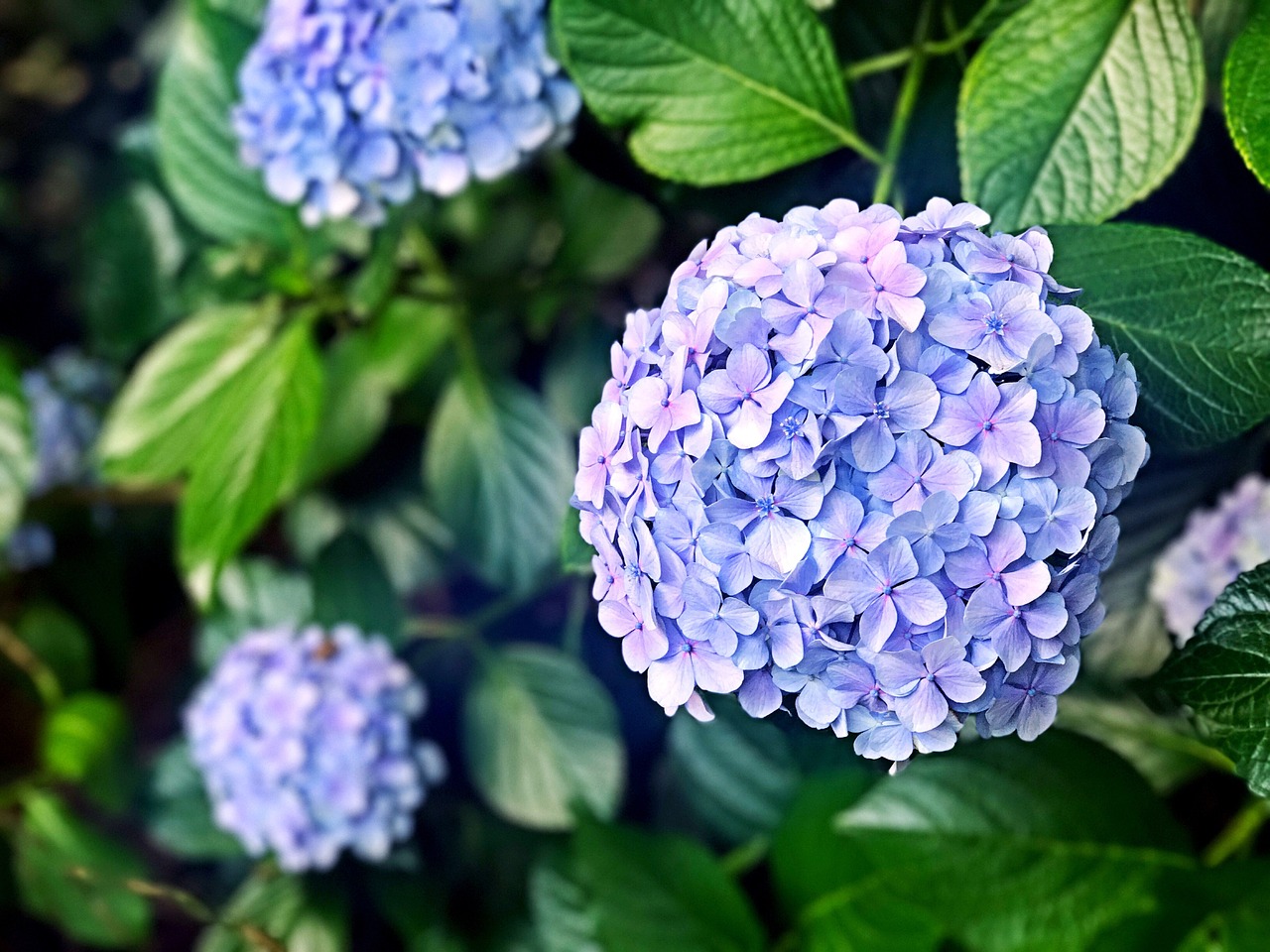Hydrangeas in Arkansas: The Ultimate Guide to Growing Stunning Blooms
Searcy, Ark. –
 Hydrangeas are a valuable group of ornamental flowering shrubs that offer stunning
visual appeal in Arkansas gardens. While many associate Hydrangeas with shade-loving
varieties like Bigleaf Hydrangea and Oakleaf Hydrangea, the Panicle Hydrangea (H.
paniculata) thrives in sunny locations, making it a versatile option for Arkansas
landscapes.
Hydrangeas are a valuable group of ornamental flowering shrubs that offer stunning
visual appeal in Arkansas gardens. While many associate Hydrangeas with shade-loving
varieties like Bigleaf Hydrangea and Oakleaf Hydrangea, the Panicle Hydrangea (H.
paniculata) thrives in sunny locations, making it a versatile option for Arkansas
landscapes.
Pruning Hydrangeas in Arkansas
Pruning Hydrangeas can be a complex task, varying by species. Panicle Hydrangea (H. paniculata) and Smooth Hydrangea (H. arborescens) bloom on new wood, much like crape myrtles. These can be pruned immediately after flowering for potential reblooming or in winter for reliable flowering the next year.
Bigleaf Hydrangea (H. macrophylla) and Oakleaf Hydrangea (H. quercifolia) bloom on buds formed the previous season. Pruning these in late fall or early spring removes potential flowers for the upcoming season. If significant pruning is necessary, it should be done immediately after flowering to preserve next year’s blooms.
Hydrangea Species for Arkansas
Climbing Hydrangea (Hydrangea anomala subsp. petiolaris)
A deciduous climbing vine that can reach 30 to 40 feet when properly supported, Climbing Hydrangea adheres to surfaces using root-like holdfasts. In Arkansas, it should be planted in partial to full shade and provided with organically enriched, consistently moist soil, particularly during summer heat.
A closely related vine, Japanese Hydrangea-vine (Schizophragma hydrangeoides), differs in flowering time and the number of sepals in its sterile flowers.
Smooth Hydrangea (Hydrangea arborescens)
Native to Arkansas and the southeastern U.S., this deciduous shrub grows to about 4 feet tall by 5 feet wide. It produces pure white flowers from May through early July and thrives in shade with moist, organic-rich soil.
Popular cultivars include:
- ‘Annabelle’ – Known for its large, showy white flower heads, introduced in 1962.
- ‘Grandiflora’ – Another variety selected for impressive blooms.
- ‘Invincibelle Spirit’ – The first pink-flowered variety, introduced in 2010.
Bigleaf Hydrangea (Hydrangea macrophylla)
A staple of Arkansas shade gardens, this hydrangea grows 4 to 6 feet tall and is known for its dramatic summer flowers. Flower color is influenced by soil pH:
- Acidic soils (pH 5-5.5) produce blue flowers.
- Less acidic soils (pH 6.5) yield pink flowers.
- Aluminum sulfate can enhance blue coloring, while lime amendments encourage pink hues.
Cultivars are divided into two categories:
- Mophead varieties have dome-shaped, sterile flower clusters.
- Lacecap varieties feature an outer ring of showy sterile flowers surrounding fertile inner blooms.
‘Endless Summer’ revolutionized Bigleaf Hydrangeas by introducing remontant (reblooming) traits, allowing blooms on both old and new wood. This trait extends bloom time and ensures flowering despite pruning or winter damage.
Panicle Hydrangea (Hydrangea paniculata)
Unlike most Hydrangeas, Panicle Hydrangea thrives in full sun, provided it receives adequate water. The large, 8-10 inch panicles may cause branches to droop under their weight, but newer cultivars offer stronger stems. The flowers transition from white to pink or red as they mature.
This species is often trained as a small tree but can also be grown as a large, multi-stemmed shrub.
Oakleaf Hydrangea (Hydrangea quercifolia)
A favorite in Arkansas gardens, this shrub offers multi-season interest with:
- Large, white flower panicles that fade to pink/red from May to June.
- Distinctive oak-shaped leaves that turn maroon in fall.
- Beautiful cinnamon-colored exfoliating bark on mature stems.
While more sun-tolerant than Bigleaf or Smooth Hydrangea, Oakleaf Hydrangea still requires sufficient moisture to thrive in Arkansas summers. It typically grows 6 feet tall by 9 feet wide.
Considerations for Arkansas Gardeners
- Site Selection: Most Hydrangeas thrive in partial shade with well-drained, organic-rich soil. Panicle Hydrangea is the best choice for full sun.
- Moisture Management: Arkansas summers can be hot and dry. Hydrangeas, especially Bigleaf and Smooth Hydrangea, require consistent moisture to perform well.
- Pest and Disease Awareness: Powdery mildew can affect Bigleaf Hydrangea, but selecting cultivars with thicker leaves can reduce susceptibility.
- Soil Amendments: To achieve desired flower colors, test and amend soil pH accordingly.
By choosing the right Hydrangea species for Arkansas conditions and following proper care techniques, gardeners can enjoy stunning blooms and year-round beauty in their landscapes.
By Sherri Sanders
County Extension Agent - Agriculture
The Cooperative Extension Service
U of A System Division of Agriculture
Media Contact: Sherri Sanders
County Extension Agent - Agriculture
U of A Division of Agriculture
Cooperative Extension Service
2400 Old Searcy Landing Road Searcy AR 72143
(501) 268-5394
ssanders@uada.edu
The Arkansas Cooperative Extension Service is an equal opportunity institution. If
you require a reasonable accommodation to participate or need materials in another
format, please contact your County Extension office (or other appropriate office)
as soon as possible. Dial 711 for Arkansas Relay.
Pursuant to 7 CFR § 15.3, the University of Arkansas System Division of Agriculture
offers all its Extension and Research programs and services (including employment)
without regard to race, color, sex, national origin, religion, age, disability, marital
or veteran status, genetic information, sexual preference, pregnancy or any other
legally protected status, and is an equal opportunity institution.